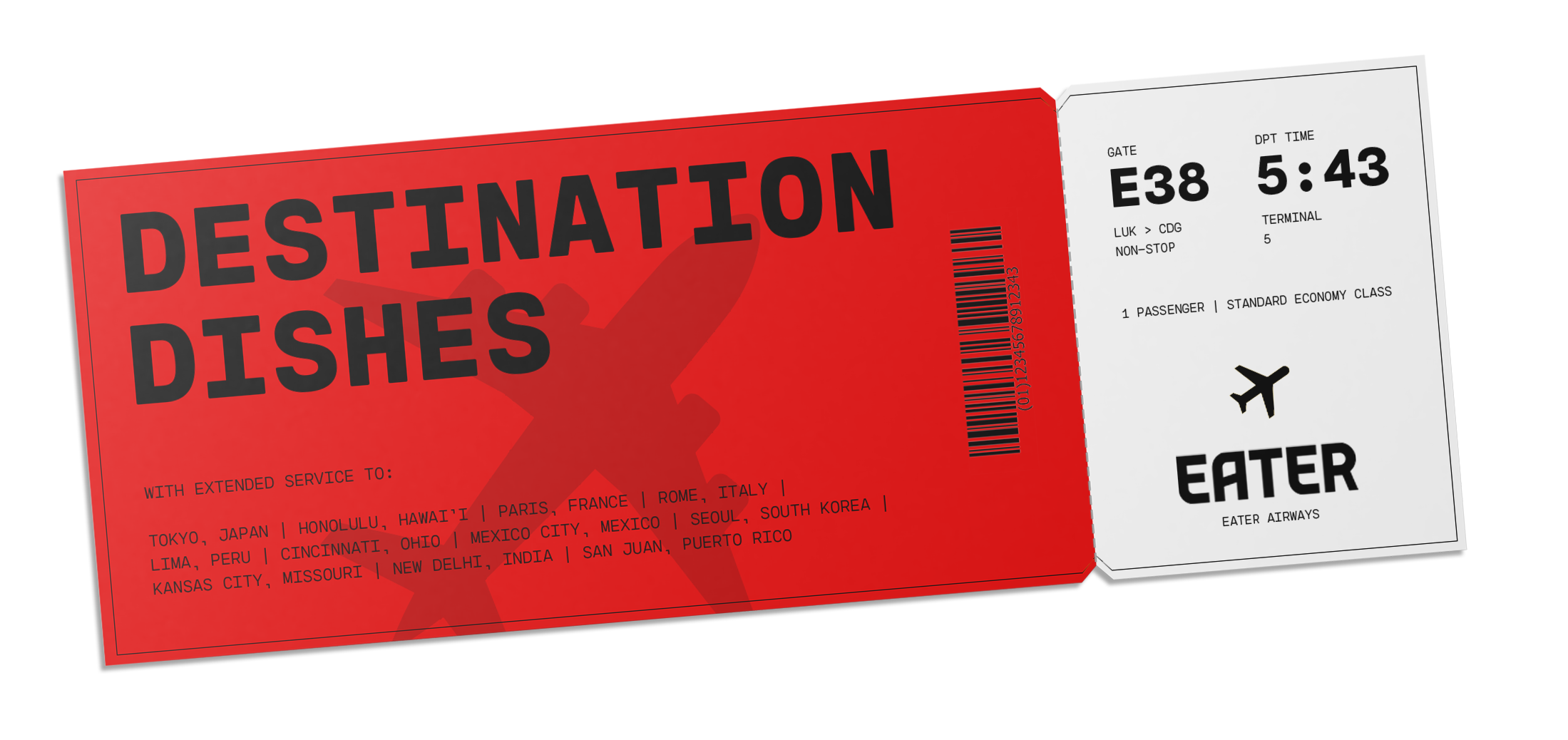Ceviche, typically spelled “cebiche” in Peru, is like the country’s national anthem. The democratic dish is offered in specialized cebicherias, casual neighborhood spots, and sophisticated fine-dining restaurants. In its simplest form, cebiche is just cubed raw fish, dressed in leche de tigre (lime juice, salt, chile, onion, and the natural juices from the fish), often served with boiled sweet potato, thinly sliced red onion, choclo (large Andean corn), lettuce, and canchita (corn nuts). No matter how it’s prepared, cebiche is a source of pride and an object of devotion.
The traditional recipe in Lima once called for marinating the fish in lime juice for up to 12 hours, using the acidity of the lime to “cook” the fish. As local Nikkei restaurants introduced more Peruvian diners to Japanese preparations of raw fish in the 1970s, dining preferences began to shift; today, a much faster style of making cebiche, with raw fish barely zapped by lime, is the most popular option (and is similar to how fishing communities have long enjoyed their cebiche in northern Peru). The next turn for Lima’s cebiche came about 20 years ago, when the dish went global. Chefs took it to Michelin-starred restaurants in Hong Kong, London, and New York, gaining the dish worldwide culinary recognition and establishing Lima as one of the great gastronomic capitals — which in turn fueled plenty more cebicherias in the city.
Gathering a list of Lima’s best cebiches is a difficult task, not only because there are many options from world-renowned chefs, but also because Limeños are very demanding when it comes to their culinary traditions. Today chefs are upgrading the dish too, enhancing their leche de tigre with smoked pepper or ginger, playing with the texture of sweet potato with glaze or tempura batter, adding avocado or capers to the medley, and bolstering the mix with fried calamari, octopus, or fried fish skin. But good cebiche doesn’t require razzle-dazzle; it relies on fresh fish (or shellfish), careful balance of acid and spice, temperature, and perfect harmony between all the ingredients. Here are a few of the most outstanding cebiches in Lima.
Liliana López Sorzano is a food and travel writer based between Mexico City and Bogotá, Colombia, where she contributes to local and international media. She is a former editor-in-chief at Food & Wine in Spanish.
Read More
/cdn.vox-cdn.com/uploads/chorus_image/image/70913160/GettyImages_72306356.7.jpg)
/cdn.vox-cdn.com/uploads/chorus_image/image/67553899/FullTable_AleppoSupperClub_2.14.jpg)
/cdn.vox-cdn.com/uploads/chorus_image/image/54890211/shutterstock_1032908740.1509553922.jpg)
/cdn.vox-cdn.com/uploads/chorus_image/image/71003418/0E7A1568.0.jpg)

:no_upscale()/cdn.vox-cdn.com/uploads/chorus_image/image/71003309/Ceviche_de_Cangrejo_Don_Fernando.0.jpeg)
/cdn.vox-cdn.com/uploads/chorus_image/image/64654426/El_mercado_de_rafael3_.7.jpg)
:no_upscale()/cdn.vox-cdn.com/uploads/chorus_image/image/71003316/chez_wong_credit_Alexander_Quesquen.0.jpeg)
:no_upscale()/cdn.vox-cdn.com/uploads/chorus_image/image/71003329/shizen4030.0.jpg)
:no_upscale()/cdn.vox-cdn.com/uploads/chorus_image/image/71003341/Mayta.0.jpg)
:no_upscale()/cdn.vox-cdn.com/uploads/chorus_image/image/71003375/CEVICHE_MERCADO.0.jpg)
/cdn.vox-cdn.com/uploads/chorus_image/image/60176199/Single_Mini_Burger_Basket.6.jpg)
:no_upscale()/cdn.vox-cdn.com/uploads/chorus_image/image/71003379/Ceviche_Fogonazo_La_Mar.0.jpeg)
:no_upscale()/cdn.vox-cdn.com/uploads/chorus_image/image/71003382/al_tok_pez_2.0.jpeg)
:no_upscale()/cdn.vox-cdn.com/uploads/chorus_image/image/71003384/Cabrilla_La_Picanteria.0.jpeg)
:no_upscale()/cdn.vox-cdn.com/uploads/chorus_image/image/71003400/0E7A1594.0.jpg)
:no_upscale()/cdn.vox-cdn.com/uploads/chorus_image/image/71003402/Ceviche_a_la_Brasa_Fiesta.0.jpeg)
:no_upscale()/cdn.vox-cdn.com/uploads/chorus_image/image/71003411/0E7A1928.0.jpg)
:no_upscale()/cdn.vox-cdn.com/uploads/chorus_image/image/71003414/Isolina_2.0.jpg)